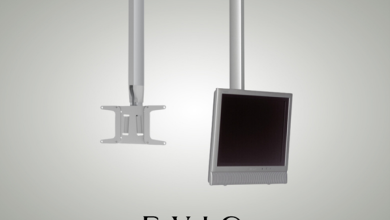The Ultimate Guide to Maximizing Your ROI with Local PPC Ads for Dentists

In the competitive field of dentistry, standing out is crucial for attracting new patients and growing your practice. DentalROI advertising is one of the most effective ways to reach potential patients who are actively searching for dental services in your area. This guide will walk you through the strategies and best practices to maximise your ROI with local PPC ads specifically tailored for dentists.
- Understanding Local PPC Ads for Dentists
Local PPC ads for dentists are online advertisements that appear in search engines, social media platforms, and other websites based on a user’s geographic location. For dentists, these ads are an excellent way to target potential patients within a specific area, ensuring that your ad budget is spent on attracting local prospects who are most likely to convert into patients.
- Setting Up Your Local PPC Campaign
- Keyword Research
Start by identifying the keywords potential patients are using to find dental services. Tools like Google Keyword Planner can help you discover high-intent keywords such as “dentist near me,” “emergency dental care,” or “cosmetic dentist.” Focus on local keywords to ensure your ads reach people in your target area.
- Geo-Targeting
Use geo-targeting settings in your PPC platform (e.g., Google Ads) to limit your ads to specific geographic areas. You can target by city, zip code, or even a specific radius around your dental practice. This ensures that your ads are only shown to users who are within a reasonable distance from your location.
- Ad Copy and Extensions
Craft compelling ad copy that speaks directly to your potential patients’ needs. Highlight your unique selling points, such as “same-day appointments,” “family-friendly environment,” or “free initial consultation.” Use ad extensions like location, call, and site link extensions to make it easier for users to contact you or find your practice.
- Optimizing Your Landing Pages
Your PPC ads should lead to a dedicated landing page designed to convert visitors into patients. This page should be highly relevant to the ad content and provide a clear call-to-action (CTA). Include essential elements such as:
A strong headline that matches the ad.
Trust signals like patient testimonials and certifications.
A contact form or phone number for easy appointment scheduling.
A map and address to reassure users of your location.
- Tracking and Measuring Success
- Conversion Tracking
Set up conversion tracking to monitor the actions users take after clicking on your ad, such as filling out a contact form, making a phone call, or booking an appointment. This data is crucial for measuring the effectiveness of your PPC campaign and understanding which keywords and ads are driving the most valuable traffic.
- Analyzing ROI
Review your PPC campaign performance regularly to assess your ROI. Look at key metrics like Cost Per Click (CPC), Click-Through Rate (CTR), and Cost Per Acquisition (CPA). Use these insights to adjust your budget, refine your targeting, and optimize your ad copy for better results.
- Advanced Strategies to Boost ROI
- Remarketing
Remarketing allows you to re-engage users who have previously visited your website but didn’t convert. By showing targeted ads to these users as they browse the web, you increase the chances of converting them into patients. This is particularly useful for Dental Service Organization Marketing, where patients might take time to decide on a provider.
- Local Service Ads
Consider using Local Service Ads (LSAs) for local search for dentists if available in your area. LSAs appear at the top of Google search results and are specifically designed for local businesses like dental practices. These ads often include a Google Guarantee badge, which can build trust and encourage clicks from potential patients.
- Common Pitfalls to Avoid
- Ignoring Negative Keywords
Failing to use negative keywords can result in your ads being shown to irrelevant audiences, wasting your budget. For example, if you don’t offer pediatric dentistry, “pediatric dentist” should be added as a negative keyword.
- Overlooking Mobile Users
Many users search for local services on their mobile devices. Ensure that your ads and landing pages are mobile-friendly to capture this significant portion of your audience.
- Inconsistent Branding
Ensure that your ad copy, landing pages, and overall online presence reflect a consistent brand image. Inconsistencies can confuse potential patients and reduce your conversion rate.
- Conclusion
Local PPC advertising is a powerful tool for dentists to attract new patients and grow their practices. By understanding the intricacies of local PPC, setting up effective campaigns, optimizing landing pages, and tracking results, you can maximize your ROI and ensure that your advertising budget is working hard to bring in the right patients with our dental marketing company. Implement these strategies, and you’ll be well on your way to creating a thriving dental practice through local PPC ads.



